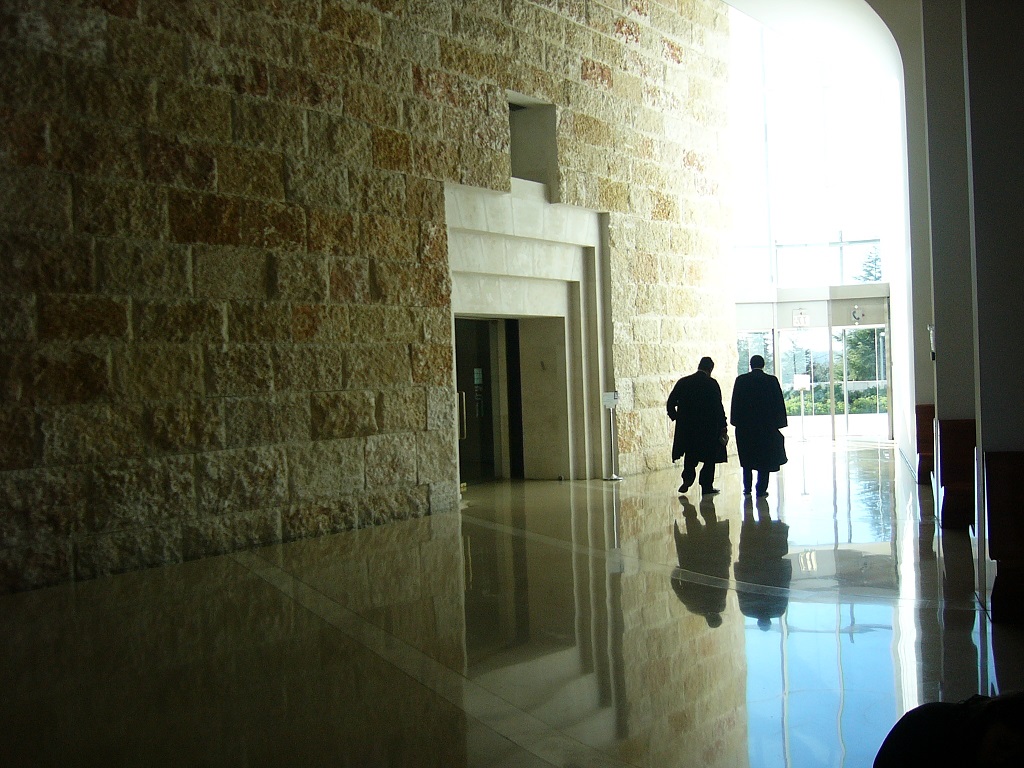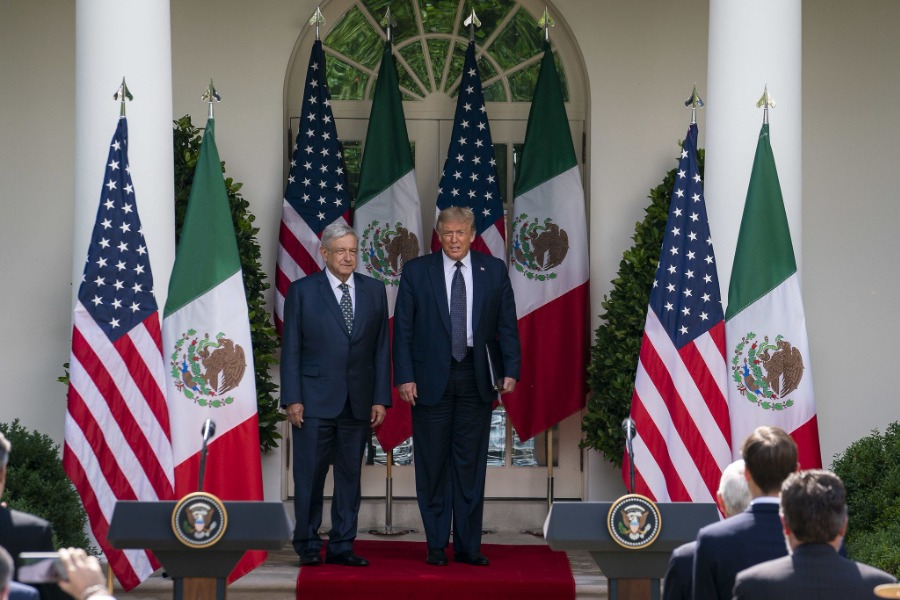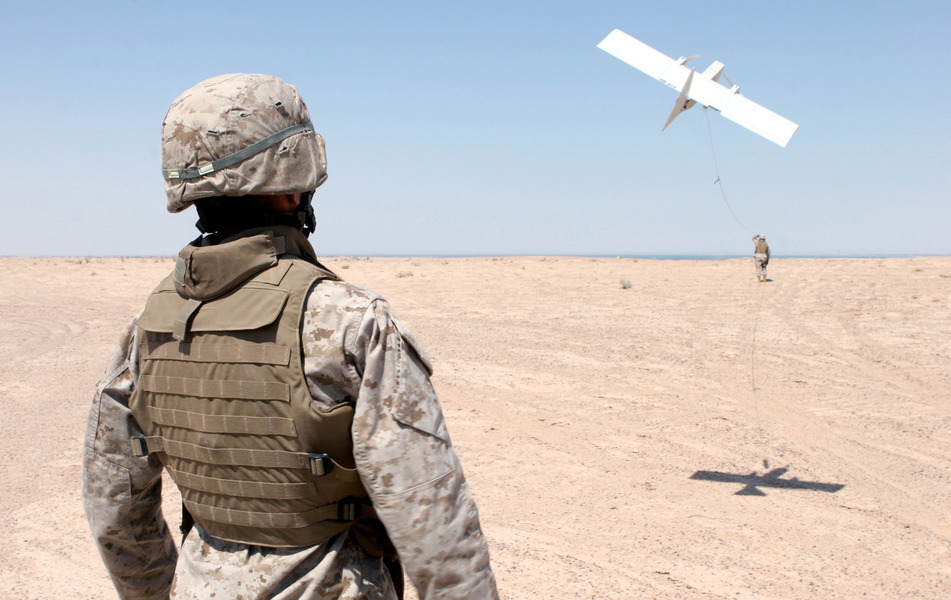‘Pressure Techniques’ and Oversight of Shin Bet Interrogations: Abu Gosh v. Attorney General
Last week, the Supreme Court of Israel issued a decision concerning one of the most sensitive areas of counterterrorism policy and practice. The decision considered so-called “pressure techniques” the Israeli Security Agency (the ISA, known colloquially as the Shin Bet) applied during the interrogation of a terrorism suspect in 2007.

Published by The Lawfare Institute
in Cooperation With

Last week, the Supreme Court of Israel issued a decision concerning one of the most sensitive areas of counterterrorism policy and practice. The decision considered so-called “pressure techniques” the Israeli Security Agency (the ISA, known colloquially as the Shin Bet) applied during the interrogation of a terrorism suspect in 2007. The decision illustrates the analytical shortcomings of the legal framework the Supreme Court famously outlined in 1999 regarding torture and physical measures in ISA interrogations. It also sheds light on the inner workings of ISA interrogations oversight. The decision will also have important echoes for American readers of post-September 11 interrogation debates in this country, debates which involved some similar techniques and both similar and very different argumentation about necessity and legality in the resort to harsh interrogation methods.
The 1999 Precedent
In a landmark 1999 Supreme Court decision, The Public Committee Against Torture v. Israel, the court held that torture, inhumane treatment and degrading conduct are prohibited in ISA interrogations. Writing for the court, then-Chief Justice Aharon Barak underscored that the prohibition against torture is “absolute” and non-derogable, with no exceptions or room for balancing. He noted that this prohibition is in line with Israel’s international treaty obligations.
But there was a “but.” The court appeared to delineate a category of physical interrogation techniques that fall short of torture, which could be excused under certain conditions. The court did not explicitly say that those physical measures do not constitute torture. However, if there can be no exceptions where it comes to torture, as the court held, then the measures that can be excused presumably fall below the threshold of torture. This is how the court’s holding has been interpreted in Israeli law, including in the recent case. Notably, this is not how the UN Committee against Torture understood the matter in its concluding observations on Israel’s fifth periodic report to the committee. Moreover, scholars have expressed the view that The Public Committee Against Torture does not distinguish between torture and the physical interrogation methods addressed in that judgment. According to this interpretation, both could be excused under certain conditions.
The physical measures the court referred to include shaking (“forceful and repeated shaking of the suspect’s upper torso, in a manner which causes the neck and head to swing rapidly”), waiting in the “Shabach” position (involving “the cuffing of the suspect, seating him on a low chair, covering his head with a sack, and playing loud music in the area”), the "Frog Crouch"(“consecutive, periodical crouches on the tips of one’s toes, each lasting for five minute intervals”), and excessive sleep deprivation.
Back in 1999, the court ruled that the resort to those methods in ISA interrogations is generally prohibited. At the same time, the court noted that in certain cases, ISA interrogators who resorted to physical interrogation methods would be able to rely on a necessity defense, which precludes criminal liability after the fact. Section 34(11) of Israel’s Penal Law provides:
A person will not bear criminal liability for committing any act immediately necessary for the purpose of saving the life, liberty, body or property, of either himself or his fellow person, from substantial danger of serious harm, in response to particular circumstances during a specific time, and absent alternative means for avoiding the harm.
The court attempted to limit the scope of the necessity defense as applied to ISA physical interrogation methods. It maintained that the necessity defense would only be available in “ticking bomb” situations:
[W]e are prepared to accept—although this matter is equally contentious—that the “necessity defense” can arise in instances of “ticking bombs,” and that the phrase "immediate need" in the statute refers to the imminent nature of the act rather than that of the danger. Hence, the imminence criteria is satisfied even if the bomb is set to explode in a few days, or even in a few weeks, provided the danger is certain to materialize and there is no alternative means of preventing it.
Furthermore, the court made it clear that the necessity doctrine cannot serve as a basis for ex ante authorization of physical interrogation methods. It left it to the legislature to consider whether or not to grant such an authorization. The Israeli Knesset has yet to do so. Although the Public Committee Against Torture decision did precipitate the enactment, for the first time, of a statute addressing the ISA’s role and authorities, the final version of the statute omitted an interrogation methods provision that was included in earlier drafts.
While rejecting ex ante authorization of physical interrogation methods, the court did allow for ex ante regulation of the application of the necessity defense:
The Attorney-General can establish guidelines regarding circumstances in which investigators shall not stand trial, if they claim to have acted from “necessity.”
Then-Attorney General Elyakim Rubinstein issued such guidelines in 1999, and they remain in force. The guidelines encourage the ISA to issue its own regulations concerning the application of the necessity doctrine. The tension here should be clear: The court’s rhetoric prohibited both torture and what the court termed physical interrogation methods (as I mentioned, the distinction is controversial). But in practice, doesn’t allowing the attorney general to set general guidelines for ex post exemptions from criminal liability for applying physical methods achieve the very same effect as ex ante authorization? The fact that the attorney general’s guidelines invite the ISA to set its own rules on necessity highlights this problem. The exception therefore seems to negate the rule.
The New Decision – Abu Gosh v. Attorney General
The new case decided last week highlights the analytical shortcomings of The Public Committee Against Torture framework by demonstrating that in practice, the necessity exception functions a lot like ex ante authorization.
Israel detained the petitioner, As’ad Abu Gosh, more than a decade ago, in September 2007. The Israeli security forces suspected that Abu Gosh served as the explosives expert for an active Hamas unit in the West Bank city of Nablus. They further suspected that he had information about Hamas’ explosive devices, labs, and plans to carry out terrorist attacks. Although Abu Gosh insisted that he was not involved in any explosives manufacturing, intelligence and other information gleaned from his interrogation strongly suggested otherwise. The information indicated that Abu Gosh withheld details about locations where explosive devices were manufactured and kept. It also raised suspicions that he was concealing information about an imminent attack.
After failing to get Abu Gosh to divulge the information they sought using ordinary interrogation methods, and after consulting with their superiors, the interrogators resorted to what the court referred to as “pressure techniques.” As a result, Abu Gosh admitted that he manufactured weapons for Hamas in Nablus, and that he built an explosives lab on his roof in the Balata refugee camp. Based on this information, the investigators located the lab, where they found substantial explosive manufacturing infrastructure.
That did not end Abu Gosh’s interrogation. The investigators again received information that strongly suggested that there might be another explosives lab out there. It also indicated that Abu Gosh knew about plans to carry out an imminent attack. The investigators once again resorted to “pressure techniques.” This time, Abu Gosh provided information about another explosives lab in Nablus, a warehouse of chemical supplies, and the name of a person to whom he had provided an explosive vest that he had manufactured. This information eventually helped the investigators locate a suicide vest that had already been smuggled into Israel and hidden in the heart of Tel Aviv. Abu Gosh was indicted and reached a plea bargain. He was sentenced to five years in prison, an additional suspended sentence, and a fine of less than $600 USD.
The Complaint and Subsequent Petition
After visiting Abu Gosh during his interrogation, the International Committee of the Red Cross filed on his behalf a complaint with the ISA and the Israeli attorney general’s office alleging that he had been subjected to violence during his interrogation. The complaint was evaluated by the ISA Inspector for Complaints related to interrogations (IFC). The IFC reviewed all of the interrogation materials, including documentation of the application of pressure techniques. He interviewed Abu Gosh and his interrogators. The interrogators confirmed that they applied pressure techniques as a last resort and in order to save lives. They rejected some of Abu Gosh’s allegations. The IFC concluded that there was no basis for initiating a criminal investigation against the interrogators, and that their resort to pressure techniques could be excused on grounds of necessity considering the circumstances of the case. The senior attorney overseeing the IFC’s office at the Ministry of Justice reviewed the findings and agreed with these conclusions, with the approval of the attorney general.
Abu Gosh then filed a petition with the Supreme Court (in its capacity as the High Court of Justice) challenging the IFC’s decision and seeking to compel the Department of Internal Police Investigations in the state attorney’s office to initiate a criminal investigation against his interrogators. Abu Gosh alleged that he had been subjected to physical violence including slamming against walls; being forced to sit on his tiptoes and enduring painful poses (a “banana”-like posture); sleep deprivation; and psychological abuse, including threats concerning his family. He argued that those measures violated the U.N. Convention against Torture (UNCAT), which Israel ratified in 1991, and constituted criminal offences according to Israeli law. He also argued that the IFC’s evaluation of his case was flawed and its integrity compromised by the ISA. Abu Gosh pointed out that no ISA interrogator has ever been subjected to a criminal investigation over complaints of torture and abuse.
The government argued that the measures applied during Abu Gosh’s interrogation did not constitute torture. Furthermore, it argued that the interrogators only resorted to pressure techniques after other means failed and after receiving reliable information—later proven correct—about an impending terrorist attack. The government therefore maintained that the interrogators are entitled to the necessity defense under Israeli criminal law, which shields them from criminal liability.
Abu Gosh filed his petition in early 2012. The court’s decision came more than five years later, and more than a decade after his interrogation. While the case was pending at the Supreme Court, the institutional structure of ISA interrogations oversight has changed substantially. The IFC’s office was transferred from the ISA to the Ministry of Justice in an effort to ensure its independence from the ISA. A new IFC took up Abu Gosh’s case for the second time, but reached similar conclusions to the first evaluation. The court facilitated a number of exchanges between Abu Gosh’s lawyers and the government, giving the petitioner an opportunity to file additional pleadings and material and access information about the interrogation.
The Decision
Technically speaking, the question in Abu Gosh was whether the attorney general should be compelled to initiate a criminal investigation against Abu Gosh’s interrogators. The court thus began its analysis by reiterating that judicial intervention in prosecutorial discretion is reserved to cases where the prosecution’s decisions is tainted with bad faith or prejudice, bad motives, or a fundamental mistake, and when it is “extremely unreasonable.” The court concluded that the decision not to initiate a criminal investigation against Abu Gosh’s interrogators was reasonable and did not merit judicial intervention.
Was Abu Gosh Tortured?
The court rejected Abu Gosh’s claim that the measures he had been subjected to during his interrogation constitute torture under the UNCAT that cannot be excused. The court’s analysis focused on the “severe pain and suffering” element of the definition of torture in article 1 of the UNCAT. (The other elements are intent; purpose of punishing or extracting information from a person; and involvement of state officials.) The court accepted the government’s position that that element was not satisfied in Abu Gosh’s case.
The court determined that Abu Gosh’s complaints were not supported with sufficient medical evidence. It diminished the evidentiary weight of a forensic-medical evaluation of Abu Gosh performed more than five years after his interrogation. The evaluation found that Abu Gosh continues to suffer from various neurologic injuries. The court also questioned Abu Gosh’s reliability because his version of the events has changed over the years, and new complaints have been added that did not appear in the original complaint filed by the Red Cross during his interrogation, nor in the medical log of the detention facility. The court further noted that it had reviewed comprehensive classified material concerning Abu Gosh’s interrogation.
Finally, the court maintained that whether a particular interrogation method constitutes torture depends on the circumstances of each individual case, and that it was not enough to challenge the type of interrogation method employed. Abu Gosh cited documents and decisions of U.N. bodies and the European Court of Human Rights that, he argued, classified interrogation method that he had been subjected to as torture. The court considered that the measures described in each of those decisions and documents—especially taken together—were far more severe than the measures applied in Abu Gosh’s case. For instance, the court cites the 2006 U.N. report on the Situation of Detainees at Guantanamo Bay, which refers to methods like use of dogs, exposure to extreme temperatures, sleep deprivation over a number of days, and protracted isolation. Another case involved beating, suspension from the ceiling, suffocation, electric shocks, exposure to cold temperatures, and deprivation of food and water over long periods of time. Even if Abu Gosh had been subjected to specific methods that were deemed torture in these more severe contexts, the court concluded, the attorney general could legitimately determine that they did not constitute torture in the particular circumstances of his case.
The Duty to Investigate and the Necessity Defense
Abu Gosh argued that even if the measures to which he had been subjected did not amount to torture, they still constitute criminal offenses. Therefore, the prosecution is under an obligation to initiate a criminal investigation. The attorney general could not rely on the IFC as a replacement for criminal proceedings. And he certainly cannot invoke a necessity defense without even initiating a criminal investigation.
The court rejected these arguments too, reiterating the broad prosecutorial discretion the attorney general enjoys. That discretion, the court reasoned, allows the attorney general to rely on the IFC in his decision-making concerning ISA interrogations. (A 2012 Supreme Court decision already approved this practice as a general matter.) Moreover, the court concluded that nothing in Public Committee Against Torture compels a criminal investigation as a prerequisite for the necessity defense. The IFC mechanism, it continued, is sufficient for determining whether the conditions for applying the defense have been fulfilled.
The final point the court addressed was whether the conditions for applying the necessity defense have been met. The petitioner argued that the measures applied in his investigation were not immediately necessary. Abu Gosh did not know that the explosive vest had already been smuggled into Israel, and it was other information that led the ISA to its location. Furthermore, the vest was located 17 days after Abu Gosh’s interrogation. The court held that the immediacy requirement refers to the interrogation rather than the danger it aims to prevent, and interrogating Abu Gosh was immediately necessary in order to prevent that danger. The court stressed that the interrogators had reason enough to believe that Abu Gosh was withholding critical information about an impending attack. But the court did not stop there. It added:
It should be made clear that even if the petitioner’s interrogators were not convinced, at the time, that the petitioner possessed information about the particular explosive vest that was smuggled into Israel, they would have been allowed to apply the exceptional interrogation methods (my translation).
In other words, the court seemed to approve of physical interrogation methods in circumstances beyond the circumstances of Abu Gosh’s particular case. This passage looks more like an authorization than an excuse.
Conclusion - Ex Post Justification or Ex Ante Authorization?
Abu Gosh was a hard case. There literally was a “ticking bomb,” and the actions of the ISA interrogators prevented a suicide bombing in the heart of Tel Aviv that could have resulted in many casualties. The fact that the case has been evaluated several times by both the IFC and the attorney general’s office probably played a role in the outcome as well.
Still, it is important to look at the implications of the decision for the legal framework governing the application of physical measures in ISA interrogation. While the court’s rhetoric in Abu Gosh largely remained loyal to the Public Committee Against Torture’s prohibition of physical interrogation methods as a general matter, the case demonstrates that the necessity back door that former Chief Justice Barak left open serves as a basis for de facto authorization of the resort to such measures under certain conditions:
- There are attorney general guidelines regarding the necessity defense that interrogators can rely upon in deciding when to resort to such measures.
- There are probably standard operating procedures within the ISA to determine when it is permissible to apply physical methods in light of the necessity defense. Recall that Abu Gosh’s interrogators consulted with their superiors before applying “pressure techniques,” which indicates that there might be ISA guidelines on necessity.
- The court has approved the attorney general’s practice of applying the necessity doctrine based only on the IFC’s recommendation, without initiating a full criminal investigation. The scarcity of criminal proceedings against ISA investigators despite multiple complaints suggests that the IFC is very generous in applying the necessity defense.
- As Yuval Shany observes, Abu Gosh sets a relatively high threshold for what constitutes torture and what level of proof is needed to establish that torture had occurred.
- In Abu Gosh, the court did not just say that the application of the physical methods in Abu Gosh’s particular case was justified. Its analysis seems to apply to a broader category of cases.
- Finally, the decision offers a relatively loose interpretation of imminence that is bound to factor into ISA decision-making regarding physical methods in the future.
In conclusion, Abu Gosh v. Attorney General demonstrates that the necessity exception to the prohibition against physical interrogation methods is perhaps not as exceptional or particular as it would appear from the court’s rhetoric in Public Committee Against Torture.





